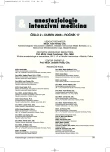Vasopressors in septic shock – 2005 update
Authors:
V. Černý
Authors‘ workplace:
Lékařská fakulta v Hradci Králové, Fakultní nemocnice Hradec Králové
; Klinika anesteziologie, resuscitace a intenzivní medicíny, Univerzita Karlova v Praze
Published in:
Anest. intenziv. Med., 17, 2006, č. 2, s. 82-84
Category:
Intensive Medicine
Overview
Vasopressors represent a major part of haemodynamic management in patients with septic shock. Current recommendations mostly prefer using norepinephrine as a first line agent in this setting. In norepinephrine-resistant septic shock, administration of vasopressin or its synthetic analogue terlipressin has been shown to reverse hypotension and to decrease the dose of norepinephrine. Nonetheless, severe adverse events during vasopressin/terlipressin therapy (extensive vasoconstriction in various vascular beds, namely in the splanchnic and coronary regions) may occur. In view of these potentially harmful effects, administration of vasopressin or terlipressin should still be considered a rescue therapy rather than a routine clinical approach.
Key words:
norepinephrine – vasopressin – terlipressin – septic shock
Labels
Anaesthesiology, Resuscitation and Inten Intensive Care MedicineArticle was published in
Anaesthesiology and Intensive Care Medicine

2006 Issue 2
Most read in this issue
- Vasopressors in septic shock – 2005 update
- What’s new in the pharmacotherapy of pain?
- Renal replacement therapy in critically ill patients: 2005 update
- Echocardiography in the critically ill patient
